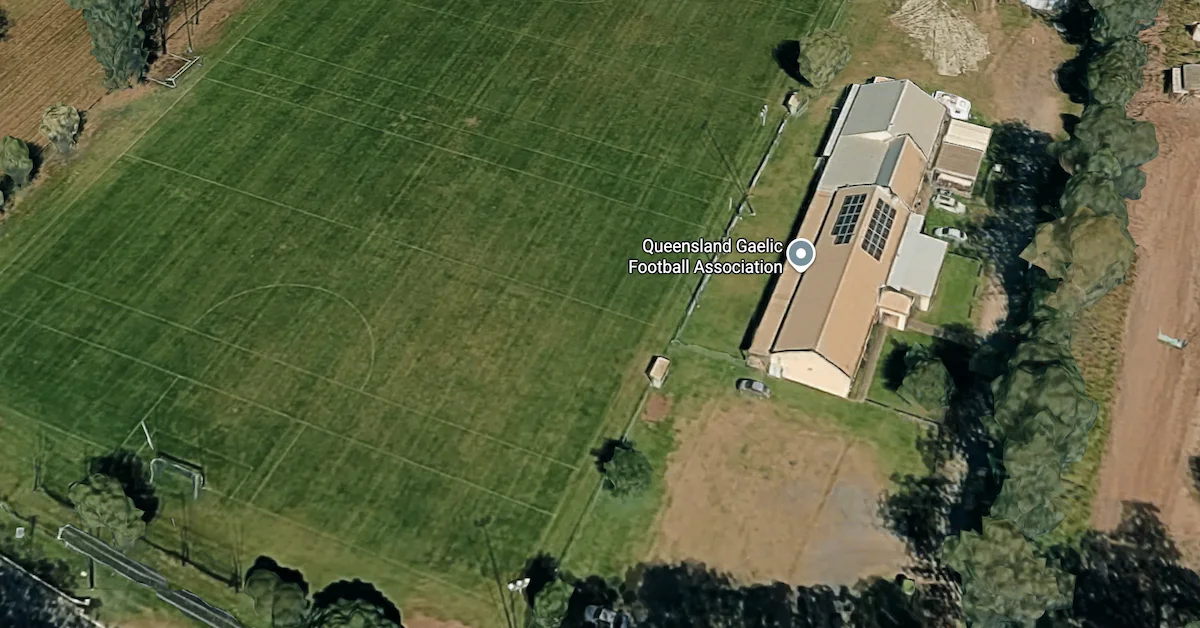The first sound that hits you at Gaelic Park in Willawong on a Sunday morning isn’t the whistle or the clash of hurleys. It’s the voices—Irish, Australian, and somewhere in between—rising together under the Queensland sun. The smell of cut grass mixes with coffee and sunscreen. A cheer goes up from the sideline, and for a few hours, it feels as though a small corner of Brisbane has become part of Ireland itself.
Built by Volunteers, Fueled by Community
Developed by volunteers from Brisbane’s Irish community, Gaelic Park is more than a sports ground. It’s the living heart of Brisbane’s Irish culture—a place where heritage, sport, and belonging meet on one patch of green. The field itself is modest, bordered by gum trees and a low clubhouse, but for those who gather here each season, it’s sacred turf.
When the Queensland Gaelic Football and Hurling Association (QGFHA) was formed and affiliated in 1975, Gaelic games were still a small, homesick pursuit far from Irish soil. Most players were new Irish arrivals looking for a taste of home.
Matches were played wherever space could be found at places like Nudgee and Iona College, before the idea of a permanent ground at Willawong became real. That dream took shape in the early 1980s, and through years of volunteer labour and community fundraising, Gaelic Park was born.
Today, it’s a thriving hub where community and competition coexist. The clubhouse hums with Irish accents—and increasingly, with voices from all over Australia. Festival days at Gaelic Park often combine live music, barbecues, and family fundraising events.
Children learn to swing hurleys alongside their parents, while older members watch proudly from the benches, swapping stories about “the old days” and how this soil feels almost like the sod back home.

Australasia’s Irish Games Come to Brisbane
The growth of Gaelic games in Queensland has mirrored the evolution of the Irish community itself. The 2025 Australasian Gaelic Games Championships, held here in October, marked a milestone.
Over 400 players from across Australia and New Zealand descended on Willawong for three days of fierce competition. Victoria took the hurling crown after a dramatic final against Western Australia, while state teams from New South Wales (Sydney), Western Australia, Auckland, South Australia, Queensland, and others battled for honours across football, hurling, and camogie.
Hosting the Championships reinforced Gaelic Park’s reputation as a key venue for Irish sport in Australasia. It also showed how far the games have travelled. Once a niche pastime for homesick expats, Gaelic sports now include many Australian-born players drawn to the speed, skill, and camaraderie.
South Australian player Siena Covino, a former NPL soccer athlete who now lines out in women’s Gaelic football, was named best on ground in the women’s intermediate final—one of many examples of local-born athletes embracing the code. For players like her, Gaelic football has become a weekly highlight—something that feels freer and more communal than the sports they grew up with.
A Global Network Rooted in One Field
Gaelic Park is part of an international GAA network that links local communities back to Croke Park in Dublin, the symbolic home of the association. When matches in Brisbane are live-streamed, family and friends in Ireland can tune in. Teams share footage and occasionally exchange players between hemispheres. The games have become more than sport—they’re a living bridge across oceans.
Yet, for all its global connections, Gaelic Park remains deeply local. Willawong is an industrial suburb on Brisbane’s fringe, but the Park brings a splash of colour and life to the area. Locals from neighbouring communities often wander in out of curiosity and leave with a newfound appreciation for this centuries-old Irish pastime. Many of today’s players, including kids who have no Irish background, are picking up hurleys for the first time.
For the QGFHA, the focus is on sustaining that growth—through strong youth programs and deeper ties with the wider community. Events like the annual Irish festival family day hint at the Park’s potential as a year-round hub for sport, music, dance, and storytelling.
Gaelic Park isn’t just about holding onto the past. It’s about shaping a future where identity, belonging, and joy all share the same field.
Published 12-Nov-2025












